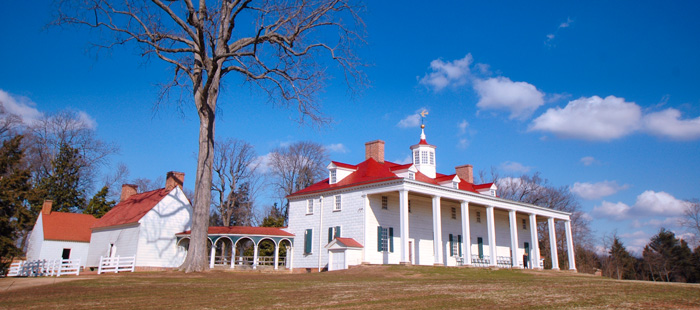This will begin a series on the first ladies of the United States of America, all amazing women in their own rights, and just as worthy of study and being remembered as their husbands. We will start with the very first First Lady, and go in order from there. Introducing Martha Washington.
Martha Washington was born Martha Dandridge on June 13, 1731, to John Dandridge and Frances Jones. Her birthplace was on her parents’ plantation, Chestnut Grove, in Virginia, which was then an English colony. Her father was a planter and a direct immigrant from England, while her mother was born in the American colonies. She was the eldest of eight children born to John and Frances and had three brothers and four sisters.
There are rumors, both unconfirmed, that John Dandridge had a daughter with a slave, as well as a son with a Caucasian mistress, during his marriage to Frances. If true, then Martha also had a half-sister and a half-brother.
When she was 18, Martha married Daniel Parke Custis, a wealthy planter who was twenty years old. She moved to his house, the White House Plantation, also in Virginia. Together, Martha and Daniel had four children, two of whom survived childhood. Daniel died at age three, and Frances died at age four. The surviving children were the third and fourth ones and were named John and Martha Custis. Martha outlived both of her surviving children, as did her second husband, George Washington, but she and George had plenty of grandchildren to care for in their old age.
After seven years of marriage, Daniel Custis died and left Martha a wealthy widow. At only twenty-five years old, she was considered a considerable prize on the Virginia marriage market. Her husband left her in control of everything, including their property (including slaves), her dower inheritance, and their children. There were also plenty of investments and cash for the young Martha. In fact, as a widow, Martha expertly ran five distinct plantations on her own.
George Washington was from a wealthy family, lived near Martha, and owned property, which made him a worthy suitor for her, and they got married in 1759 when they were both 27. In fact, George had known Martha and Daniel when Daniel was alive. However, George was not Martha’s only suitor. She had another offer of marriage from Charles Carpenter, another local planter with even more money than George. Eventually, love won out over money for the already rich widow, as she and George had a genuinely loving and affectionate marriage with one another.
Martha and George did not have any children together, which many historians attribute to George being made sterile by a bout with smallpox as a teenager. It didn’t seem to matter to them. Together, they raised Martha’s two surviving children by Daniel, and George treated them as his own.
Martha’s daughter Martha, nicknamed Patsy, died at age 17 in 1773 due to an epileptic seizure. Her son John, nicknamed Jacky, was at college at the time and returned home to be a comfort to his mother and step-father, who were by then living at George’s home at the Mount Vernon plantation.

Mount Vernon Plantation
Jacky Custis married and had four children, and even served as a personal aide to George during the siege of Yorktown in the Revolutionary War. However, he died of typhus during the Revolution in 1781 at the age of 27. Martha and George raised two of Jacky’s children, Eleanor Parke Custis and George Washington Parke Custis. Martha and George were also well known for providing financial support to numerous nieces, nephews, and other family members in both the Washington and Dandridge clans.
Though Martha preferred living a quiet life at Mount Vernon, she accompanied George to the battlefield and stayed at the army’s encampments for eight winters in a row during the Revolution, to keep up morale among the soldiers, and to be near the husband she loved.
Once the Revolution was over, Martha wanted George to come home to stay. She was not happy when he was elected as the first president of the new United States, and did not want him to accept the position. When he did, she refused to go to the inauguration. Yet, once he took office, she assumed the duties the public expected of her as the president’s wife, hosting dinners and affairs of state. The term “First Lady” had not come into use yet, and she was referred to as “Lady Washington.” She is the only first lady to never live in the White House, as it was not built during her tenure. She and George conducted business at temporary capitols in New York and Philadelphia.
Martha was happy to go back to Mount Vernon and leave public life behind when George’s two terms as president were over. She kept a full-length portrait of George, done by artist John Trumbull in 1790 and given to her as a gift, displayed at Mount Vernon in the New Room.
She also managed household affairs, including the management of the more than 300 slaves she and George owned together. Each of them brought about half of this number into the marriage. George stipulated in his will that the ones he brought into the marriage were all to be freed after Martha’s death, if Martha outlived him, which she did by three years. Martha expressed a particular desire to keep the slaves on the plantation because so many of the ones she and George brought into the marriage intermarried with each other and had families. She wanted to keep those families intact and was dismayed when a few ran away.
One slave who ran away during George’s second term as president and gained freedom in New Hampshire was interviewed in the 1840’s, and she had nothing but good things to say about Martha and the way she was treated by her. She just said Martha did not understand being treated well was not enough for her, that what she really wanted was freedom to do as she pleased, for her and the children she had after she gained her freedom.
Martha actually freed all of George’s slaves a year after George died. Those close to her advised her to do so because all the slaves knew they would be free when she died, and her loved ones felt it was in her best interests to not give them a reason to make that happen sooner than necessary. All of George’s slaves were freed in 1801. Martha freed none of her own, however, and left them to her grandchildren, which resulted in the breaking up of some slave families… one of the very things she tried to prevent when she was alive.
Martha always had somewhat delicate health, and she died in 1802, at the age of seventy. She was buried next to George in the old Washington family vault. In 1831, the executors of George’s estate moved both Martha and George to a new tomb within the grounds of Mount Vernon. Martha leaves many descendants today through her grandchildren, and these grandchildren’s descendants share a special connection with both her and the man who raised their ancestor Jacky Custis, George Washington. The name George Washington is still used among Martha’s descendants.






